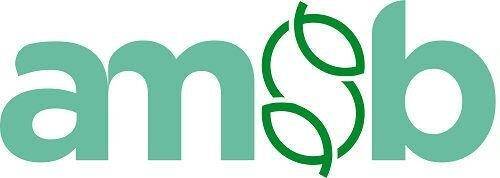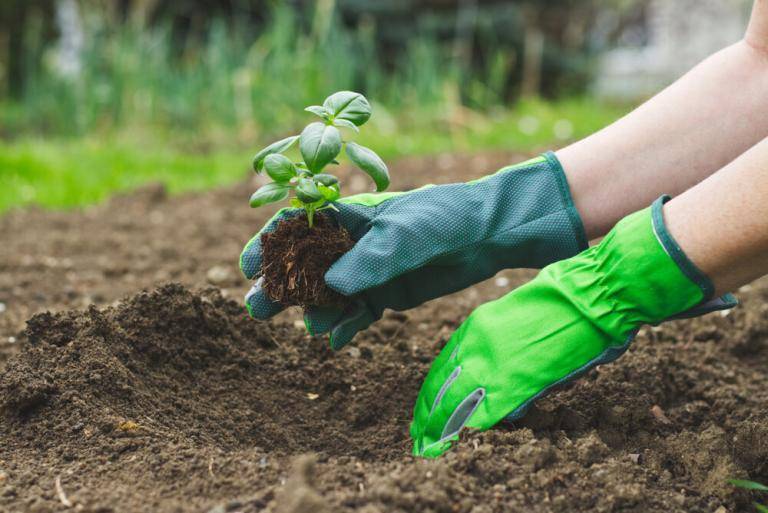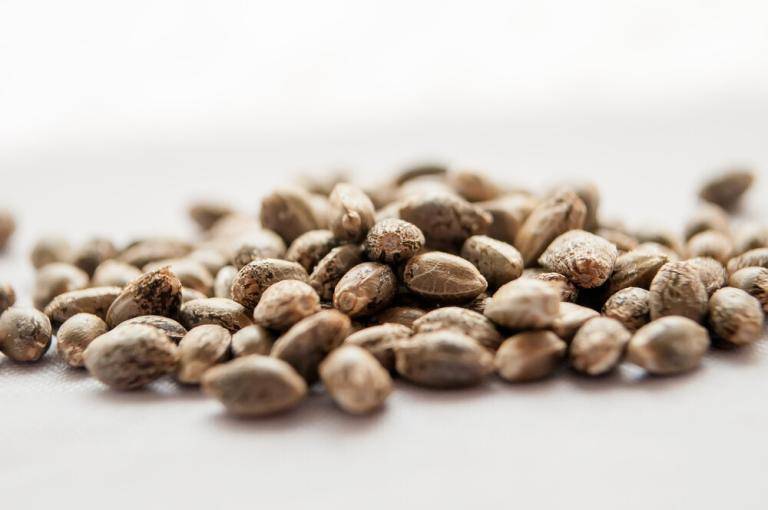Topping marijuana plants is essential to increase marijuana yields and improving the plants’ appearance. Topping entails cutting off the top of the cannabis plant. Most novice growers don’t see topping as essential. Some even are clueless about it, let alone understanding the benefits attributed to it. Even for the few who have an idea about topping thinks it amounts to ruining their precious plants.
Although topping cannabis may sound weird to some growers, the technique is quite effective when done properly. First, it increases the colas produced by the plant. Secondly, it helps the plant access light easily and unobstructed. The results are brushier plants with more leaves, bigger buds and more branches.
Keep reading how we increased our harvest by 32,27%!
What exactly is topping?
Topping is a type of pruning process that entails removing the top part of the cannabis plant specifically to provide space for lateral growth. This pruning technique aids with stopping the vertical growth of the cannabis plant. It further manipulates the height of the marijuana plants and also increases their yield.
Which is the perfect time for topping my cannabis plants?
You can start toping your plants once they are bigger and stronger enough. At this time, the plants can withstand the damaged incurred by topping. Overly, the topping should be done early enough. Although it depends on the marijuana strain, most plants can be topped when they are 10 inches tall.
Most inexperienced growers, however, tend to either top too late or too early. To know when to perform topping, check the plants’ internodes. The plants should have at least four internodes. The plants should also be showing clear signs of growth near their lowest nodes. Plants that are topped too early can experience a sharp decline in growth.
If you doubt whether your plants are ready for topping, check whether they have fan leaves. If they are several fan leaves, then they are ready for topping. If you are growing your plants on containers such as pots, check whether the roots of the plants have started growing towards the drain holes. If yes, then prepare for topping.
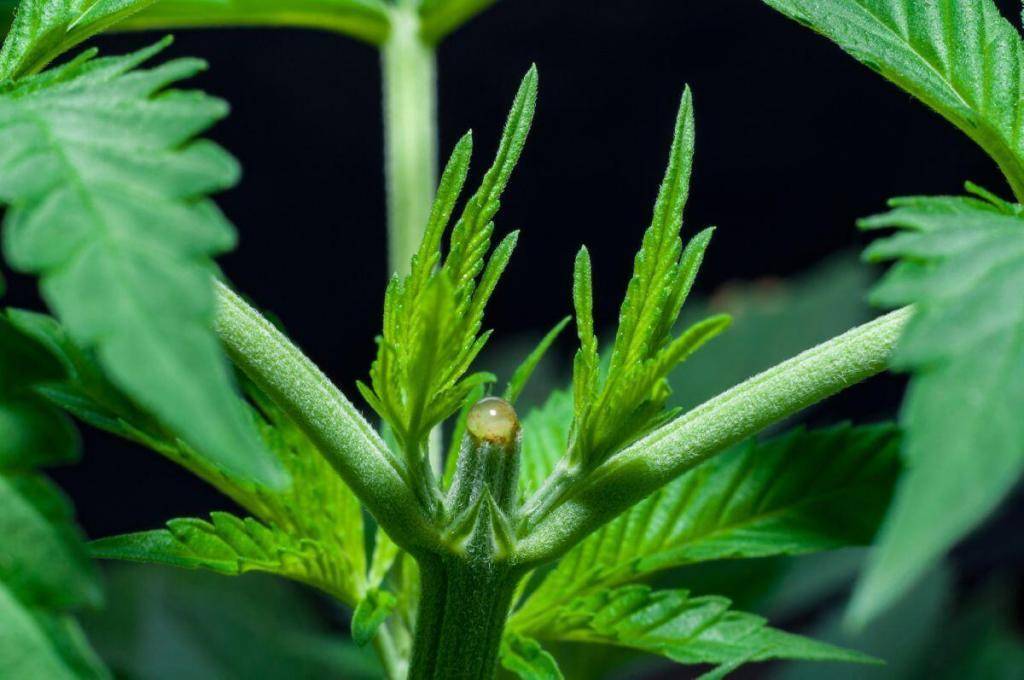
Why should I top my plants?
Before getting into detail on how to top your plants, growers need to understand why this process is necessary for their plants. Topping is primarily done for boosting the yields of the marijuana plant. The technique is especially beneficial where cannabis is grown indoors, or in an indoor grows room. In this case, space is essential. And thus topping will help keep the plants closer to the light. Remember, cannabis is just like other plants. Its leaves need light for photosynthesis.
Apart from allowing light to reach those newly developing colas, topping will further help the plants to get plenty of light throughout the entire vegetative phase. Once the colas start developing leaves after topping is done, they will grow diagonally rather than growing directly upward, which gives the leaves a bigger surface area for effective photosynthesis.
If you allow your plants to grow without stopping them, they will grow into a single large stem with just a single bud. The yields will be dismal, and the quality too will be reduced significantly. Simply put, the topping is important for productive marijuana growing.
How much our yield increased
We tried to show you how much your yield can increase, by growing 4 cannabis plants in a controlled environment.
All 4 plants are of the same strain, use the same light schedule, have the same humidity and grow on the same amount of fertilizer. In the end one topped cannabis plant gave a much larger yield than the other topped plant, even though it still gave more yield than the not-topped plants. We think this difference in harvest has to do with the moment we topped our plants. The topped plan with the most yield had a bit of a head start on the other plant, so we probably should not have topped them at the same time.
On average the yield increase by 32,27%! Imagine if we topped the second plant later, the yield could have been up to 35-45% more than the not-topped plants.
Overall we are very happy with the results. Before this experiment we where never really sure if topping increase the yield, because it could have been attributed to other factors, including humidity, fertilizing, strain type and lighting schedule.

How to top your plants in 4 steps
Now, you are sure your plants are ready for topping, and you know why they need topping. Now it about time to do this technique. Get your pruning shears, if you have many plants to top. But if you have a couple of plants, a sharp razor is just perfect for the task. Since some plants could be having larger branches, you should always use pruning shears.
If you use a blunt knife or razor, you will ruin the plants, and the benefits of topping won’t be realized. Also, sterilize your shears, scissors or any cutting object of your choice by disinfecting them with alcohol.
Disinfecting is recommended particularly when topping small, delicate plants. Make precise cuts when topping to keep the plants healthy and to avoid damage and infection on the plants. Here is the standard way of topping cannabis plants for a larger yield.
- Please get rid of larger branches first – removing such branches is vital for it gives you space before you do the more detailed work involved with topping. Always with removing the branches located on the bottom of your plants. These branches won’t get enough sunlight as the plants proceed to grow. As such, they won’t become the fully developed buds you want.
- Remove the branches on the center of the plants – branches that are located in the center of the plants also get shaded out with time. Just like the branches on the bottom, they won’t also develop full buds. That calls for their removal. Also, remove the newly growing branches located on the stem of your plants.
- Remove the dead branches – dead or drying branches on your plants don’t serve any purpose whatsoever. Cut them off. Also, remove those small branches and leaves since they won’t grow into developed buds. Again, dead branches and leaves will add weight on the plants.
- Monitor the results – topping does inflict minor injuries on the plants, although not like pruning. Your plants may need a couple of weeks to recover fully from topping. Keep monitoring your plants to see how they are proceeding upon topping. You can also top the branches again if you think addition topping is necessary.
Are there other ways to cut your plant in order to increase harvest?
There are other ways of topping your plants other than using the standard method. Here is a look at some other techniques you can use on your plants.
The pinching method
Most growers prefer using pruning shears or scissors. Experienced growers, however, prefer using the pinching method when topping their plants. The method entails pinching of the tops between your fingertips.
Although this method is also effective, just like the first one above, it has its disadvantages. For example, pinching doesn’t work on stronger branches. If done wrong, it runs the plants leaving them wounded. To avoid doing something that can potentially ruin your plants, make use of pruning shears.
Cannabis plants are quite pliable and bendy during vegetative growth. Pinching can work at the vegetative phase. Past this phase, the plants will have matured enough, thus necessitating the use of pruning shears.
Fimming
This technique is reserved for experienced growers. But it works super well for growers who do it properly. Here, the topping is done on the plant’s main central stem at first. It makes the other secondary stems to increase in size. Once the stems are healthy and strong, they are topped again to produce more stems. This technique is conducted with plenty of care. If the stems aren’t cut properly, the emerging shoots will be damaged, and thus the buds won’t grow.
We wrote a full guide about fimming.
Super cropping
Super cropping is almost similar to the FIM technique. However, the difference between these two topping techniques is that super cropping doesn’t entail topping the plants’ main stem. Instead, the main stem is pinched between the fingertips.
It is then bent until the inner portion of the main stem breaks to give room for new stems to shoot. The technique allows growers to control the height of their plants.
Additionally, it encourages bushier growth of the marijuana plants. But it can subject the plants to considerable stress if performed wrong.
SOG technique
The technique means Sea of Green. It is primarily done to reduce the time taken by the cannabis plants to vegetate and flower. The method further promotes bigger yields. It is recommended for growers with limited growing space.
With SOG, cannabis plants are made to flower earlier than usual. It leads to shorter plants which have additional access to light. After topping through this technique, what emerges is a large canopy of buds. The canopy is fully exposed to the sunlight. This increased exposure encourages the growth of bigger buds.
SCROG topping technique
The topping technique uses a similar concept to the SOG technique above. But with this technique, a sort of netted screen is utilized. The netted screen can be crafted from chicken wire or simply a nylon netting. The screen is meant to control the height and size of the marijuana plants.
With such control, the amount of buds produced by the plants increases significantly. Topping here is done to manipulate specific branches of the plant to grow in a certain direction while exposing others to light. The key objective of this topping technique is to increase the colas hence increasing yield.
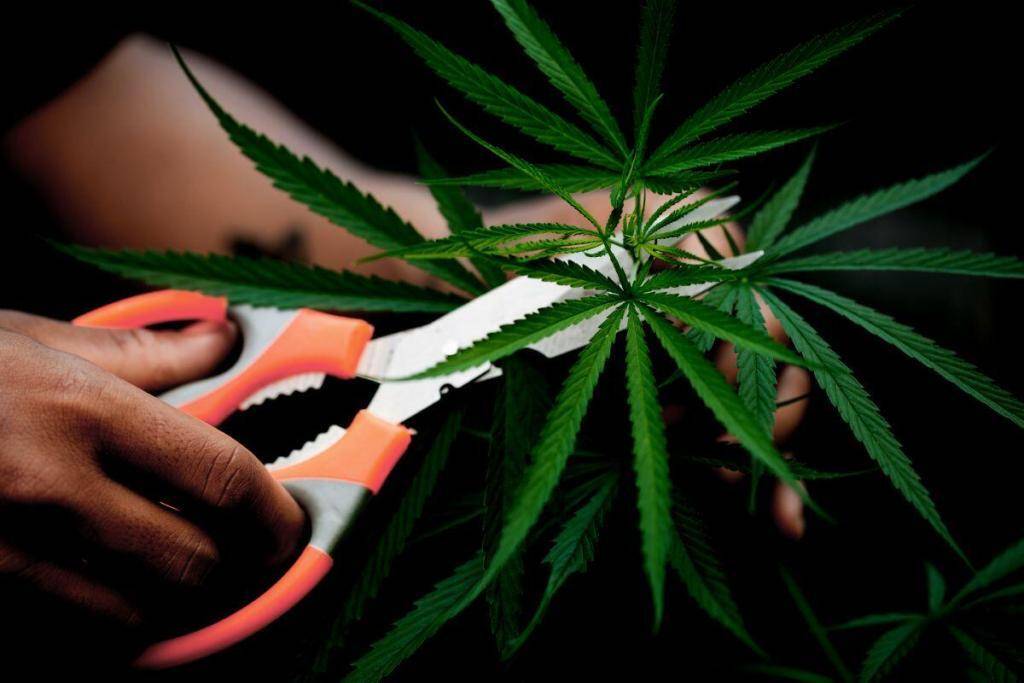
What to check for when topping your plants
Topping is essentially done to improve the quality of its buds and to increase the overall yields of the plants. When done properly, topping helps the plant receive plenty of airflow and sunlight, thus supplying the plants with plenty of nutrients.
However, before performing it, growers are advised to check for various things when topping their plants. Some of the things to check include:
- Branches that get little sunlight
- Leaves that are dying off or those that have died already
- Bud sites that don’t get sufficient light
In their early stages, plants are narrow enough such that the foliage will get plenty of sunlight. But as they continue growing, some of the branches and leaves will start overlapping the others. Top the plants when they develop a bushy shape. Plants will yield more when they are bushy.
Which plants are good for topping?
Any cannabis plants are potential candidates for topping, provided they are healthy plants. But not all plants can be topped. For instance, unhealthy plants can’t be topped, such plants risk dying, or their growth is suppressed altogether.
Again, plants that haven’t been getting sufficient nutrients or light can’t withstand topping. Some marijuana strains don’t work well after topping. For example, Indica strains don’t need topping to yield properly. This process easily affects their growth.
But almost all fast-growing strains are great candidates for topping.
Common topping mistakes to avoid
No denying that topping cannabis can increase yields. But only if the process is done properly and at the right time. Novice growers make mistakes when topping their plants, hence compromising on the yield of their plants.
The following are the mistakes growers make when topping their plants, and which you should avoid when topping.
- Stripping too many fan leaves – don’t strip too many fan leaves from your plants. It results in unhealthy plants that don’t have enough leaves needed for photosynthesis. Just eliminate a few leaves, particularly those that deserve to be eliminated, like the as the dying leaves or those that can’t access light.
- Topping during the flowering season – topping has stages just like any cannabis growing activity such as pruning. The ideal topping time is during the vegetative stage. If you top your plants during the flowering stage, you plants risk getting the buds needed for a larger yield.
- Not looking at the strain’s genetics – topping doesn’t work well with all cannabis strains like mentioned earlier. The activity can be detrimental to some strains. Never perform this activity if you aren’t sure of whether your plants are suitable candidates for topping.
- Causing harm to your plants – topping should be done with precision. Intricate cutting is vital for a successful topping. Whatever cutting tool you are using, make sure it is sharp enough to perform precise cuts or else you will effectively hurt your plants. Again, don’t cause harm to your plants by using unsterilized equipment.
- Using the wrong technique – Don’t use any topping technique that you don’t understand precisely how it works. Use an easy method that isn’t too complicated, particularly if you are a novice grower.
Conclusion
Topping your cannabis plant is a sure way of increasing their yields and enhancing their quality. It is needed for both large and small-scale growers alike. When you top your plants properly, you will be rewarded with a bumper yield upon harvesting. Top your plants today just in case they need topping to allow them to become the healthy, high-yielding plants you can take pride in!
Frequently Asked Questions
When to stop topping marijuana plants?
Does topping a plant increase yield?
How much does topping increase yield?
